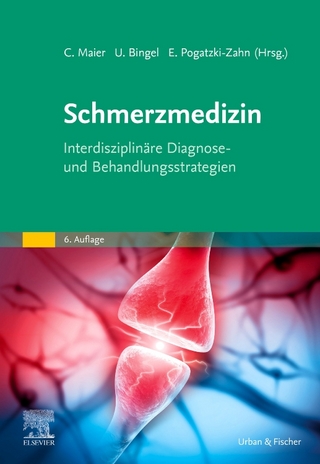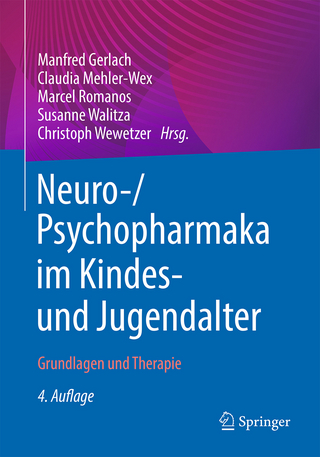
Radiomics and Radiogenomics in Neuro-Oncology
Academic Press Inc (Verlag)
978-0-443-18509-0 (ISBN)
- Noch nicht erschienen (ca. Mai 2025)
- Versandkostenfrei
- Auch auf Rechnung
- Artikel merken
Dr. Sanjay Saxena is an Assistant Professor in the Department of Computer Science and Engineering at IIIT Bhubaneswar, India. He obtained his Ph.D. from the Indian Institute of Technology (BHU), Varanasi, and completed his postdoctoral research at the Artificial Intelligence in Biomedical Imaging Lab, University of Pennsylvania, USA. Dr. Saxena's primary research area involves developing AI-based methods for brain cancer analysis, with a broader focus on Data Science, Machine Learning, Deep Learning, and the emerging fields of Radiomics and Radiogenomics. His tenure under Prof. Davatzikos at the University of Pennsylvania was instrumental in his significant learning about Radiomics/Radiogenomics. Dr. Saxena is a member of prestigious organisations such as IEEE, the Society of Neuro-Oncology, ACM, and the New York Academy of Science. He has presented his work at globally recognised universities such as like Imperial College London, Stony Brook University, and Vienna University of Technology. and has made substantial scholarly contributions, with several peer-reviewed Journals, conference publications, book chapters, and two books to his name, advancing the intersection of AI and human cancer research. Dr. Jasjit Suri, PhD, MBA, is an innovator, visionary, scientist, and internationally known world leader. Dr Suri received the Director General’s Gold medal in 1980 and Fellow of (i) American Institute of Medical and Biological Engineering, awarded by the National Academy of Sciences, Washington DC, (ii) Institute of Electrical and Electronics Engineers, (iii) American Institute of Ultrasound in Medicine, (iv) Society of Vascular Medicine, (v) Asia Pacific Vascular Society, and (vi) Asia Association of Artificial Intelligence. Dr. Suri was honored with life time achievement awards by Marcus, NJ, USA and Graphics Era University, Dehradun, India. He has published nearly 300 peer-reviewed Artificial Intelligence articles, nearly 2000 Google Scholar Publications, 100 books, and 100 innovations/trademarks leading to an H-index of nearly 100 with about 43,000 citations. He has held positions as chairman of AtheroPoint, CA, USA, IEEE Denver section, Colorado, USA, and advisory board member to healthcare industries and several universities in the United States of America and abroad.
Section 1: Imaging signatures for brain cancer molecular characteristics 1. Isocitrate Dehydrogenase Mutations (IDH) 2. TP53 Mutations 3. ATRX Loss 4. MGMT (O6-Methylguanine-DNA-Methyltransferase Methylation) gene 5. EGFR (Epidermal Growth Factor Receptor) 6. Other mutations Section 2: Clinical applications of R-n-R in Neuro-Oncology 7. Risk Stratification 8. Survival Prediction 9. Heterogeneity Analysis 10: Early and Accurate Prognosis Section 3: Radiogenomics studies for different brain cancer types 11. Glioblastoma 12. Astrocytoma 13. CNS lymphoma 14. Others brain cancers: Meningioma, Acoustic neuroma, Haemangioblastoma Section 4: AI in R-n-R for Neuro-Oncology: What we have achieved so Far? 15. A Survey on recent advancement of AI-enabled R-n-R in neuro-oncology 16. Prospects and advances in R-n-R 17. Progress and future aspects 18. Limitations of AI in R-n-R study
| Erscheint lt. Verlag | 1.5.2025 |
|---|---|
| Verlagsort | San Diego |
| Sprache | englisch |
| Maße | 152 x 229 mm |
| Themenwelt | Medizin / Pharmazie ► Medizinische Fachgebiete ► Neurologie |
| Medizin / Pharmazie ► Medizinische Fachgebiete ► Onkologie | |
| Naturwissenschaften ► Biologie ► Humanbiologie | |
| Naturwissenschaften ► Biologie ► Zoologie | |
| ISBN-10 | 0-443-18509-3 / 0443185093 |
| ISBN-13 | 978-0-443-18509-0 / 9780443185090 |
| Zustand | Neuware |
| Haben Sie eine Frage zum Produkt? |
aus dem Bereich


